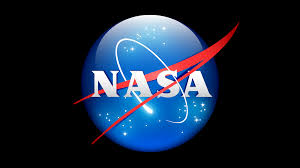 Yesterday, at the 39th meeting of the International Civil Aviation Organization, 191 countries reached a global climate deal to reduce carbon emissions from aviation. At the same time, NASA is working to create new experimental aircraft that will demonstrate new “green aviation” technology intended to dramatically reduce fuel use, emissions and noise – with the goal of cutting emissions from the nation’s commercial aircraft fleet by more than 50 percent, while also reducing perceived noise levels near airports to one-half the level of the quietest aircraft flying today.
Yesterday, at the 39th meeting of the International Civil Aviation Organization, 191 countries reached a global climate deal to reduce carbon emissions from aviation. At the same time, NASA is working to create new experimental aircraft that will demonstrate new “green aviation” technology intended to dramatically reduce fuel use, emissions and noise – with the goal of cutting emissions from the nation’s commercial aircraft fleet by more than 50 percent, while also reducing perceived noise levels near airports to one-half the level of the quietest aircraft flying today.
To that end, NASA recently awarded six-month contracts to four companies, who will each define the technical approach, schedule, and cost for one or more large-scale, subsonic X-plane concepts. These concepts are in support of NASA’s ultra-efficient subsonic transport research goals.
The companies are Aurora Flight Sciences Corporation of Manassas, VA; Dzyne Technologies Incorporated of Fairfax, VA; Lockheed Martin Aeronautics Company of Ft. Worth, TX; and The Boeing Company of Hazelwood, MO.
“Engaging these contractors now to gather this information will help us move forward efficiently and expeditiously when we’re ready to commit to building the X-planes themselves,” said Ed Waggoner, NASA’s Integrated Aviation Systems Program director.
Each company is to detail their specific X-plane system requirements for a piloted experimental aircraft capable of sustained, two to three hours of powered high subsonic flight, as well as conducting at least two research flight sorties per week over the course of a year-long program.
The requested information is to be built around a plan that would see the selected experimental aircraft eventually flying no later than 2021.
NASA’s return to flying large-scale X-plane technology demonstrators – a staple of its aeronautical research heritage – is part of New Aviation Horizons, an ambitious 10-year accelerated research plan developed and announced by NASA earlier this year.
Source: nasa.gov

